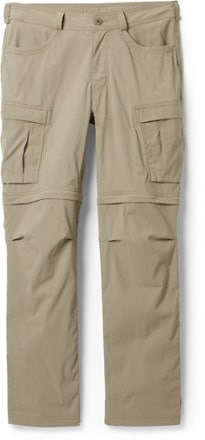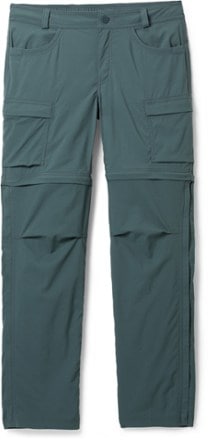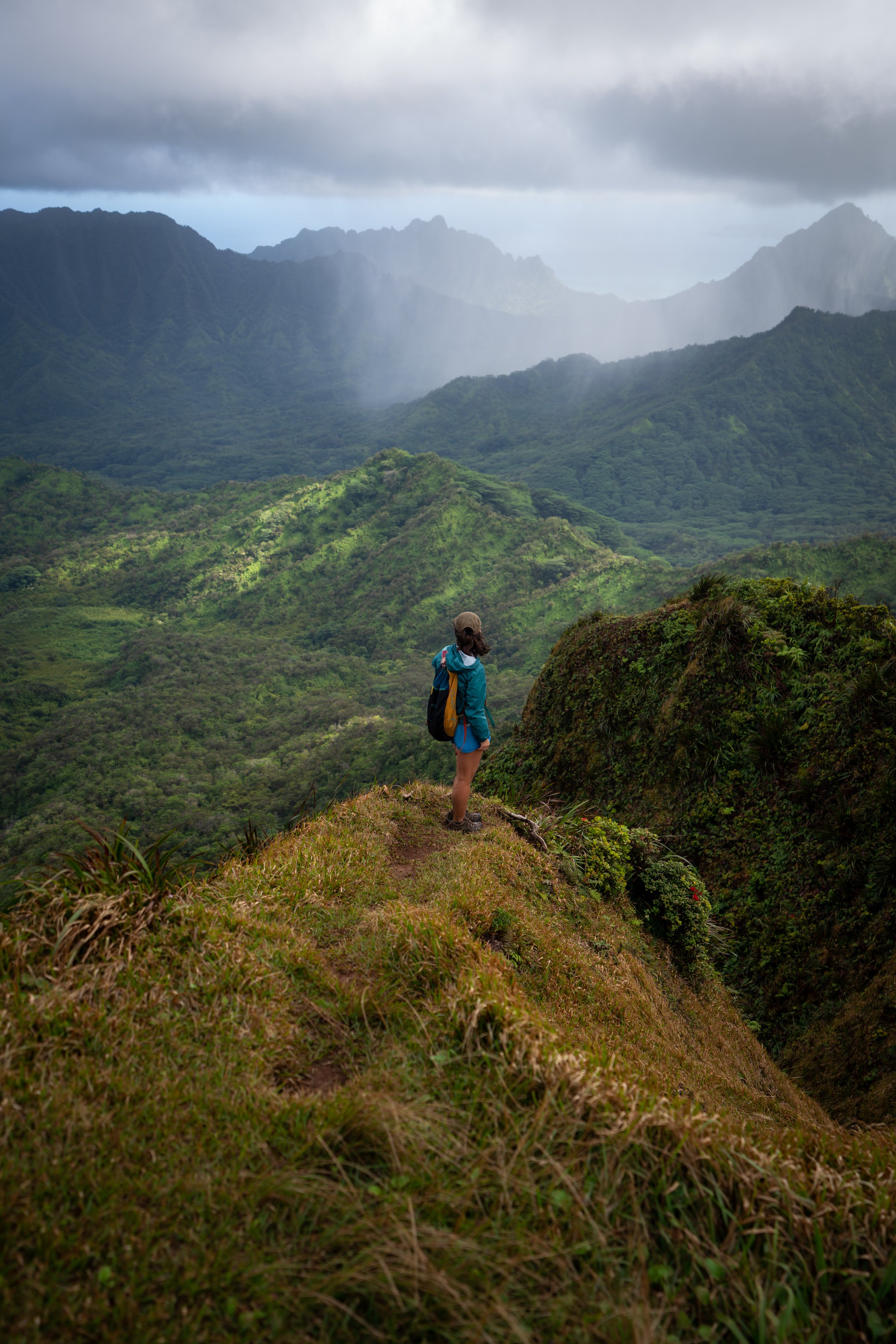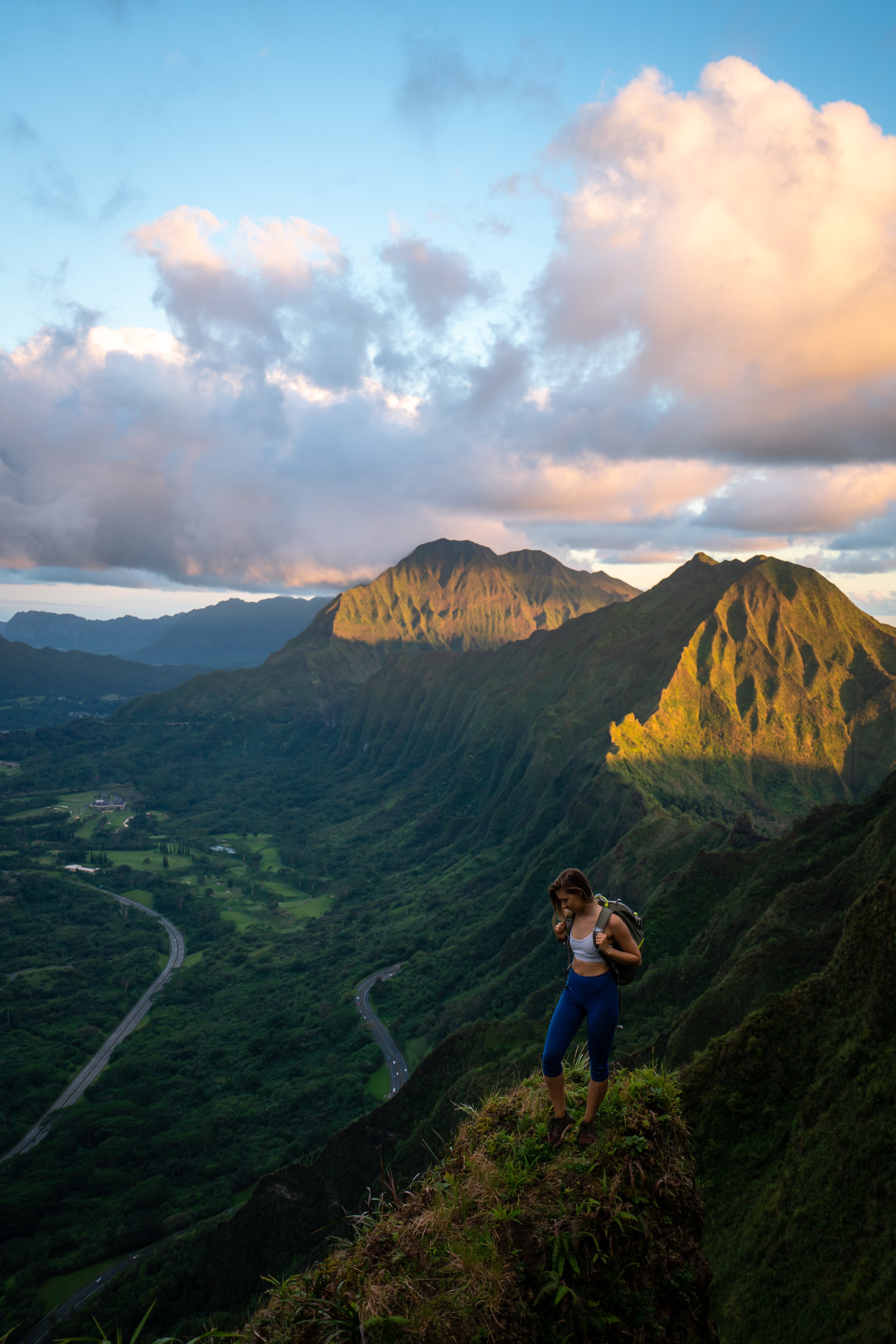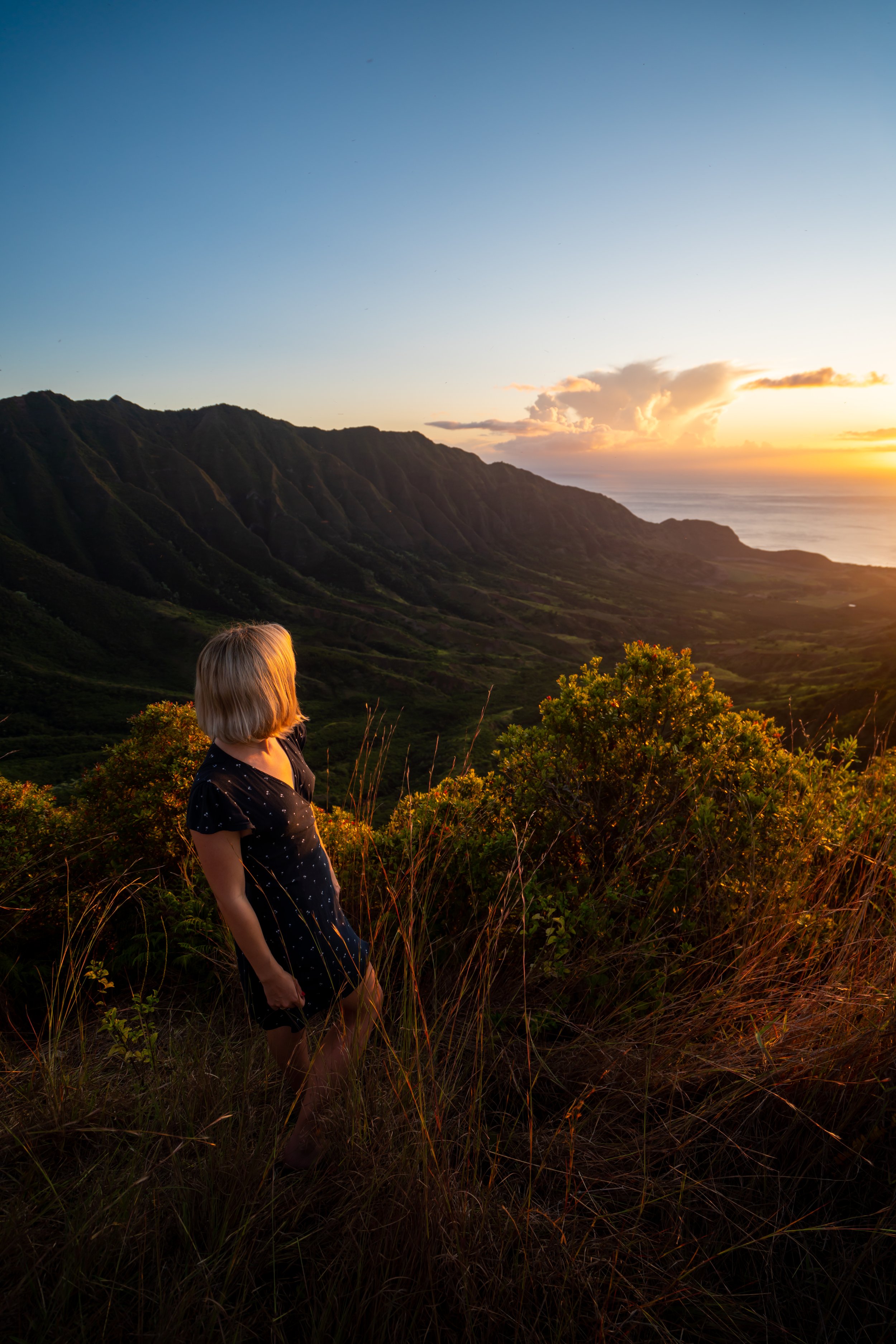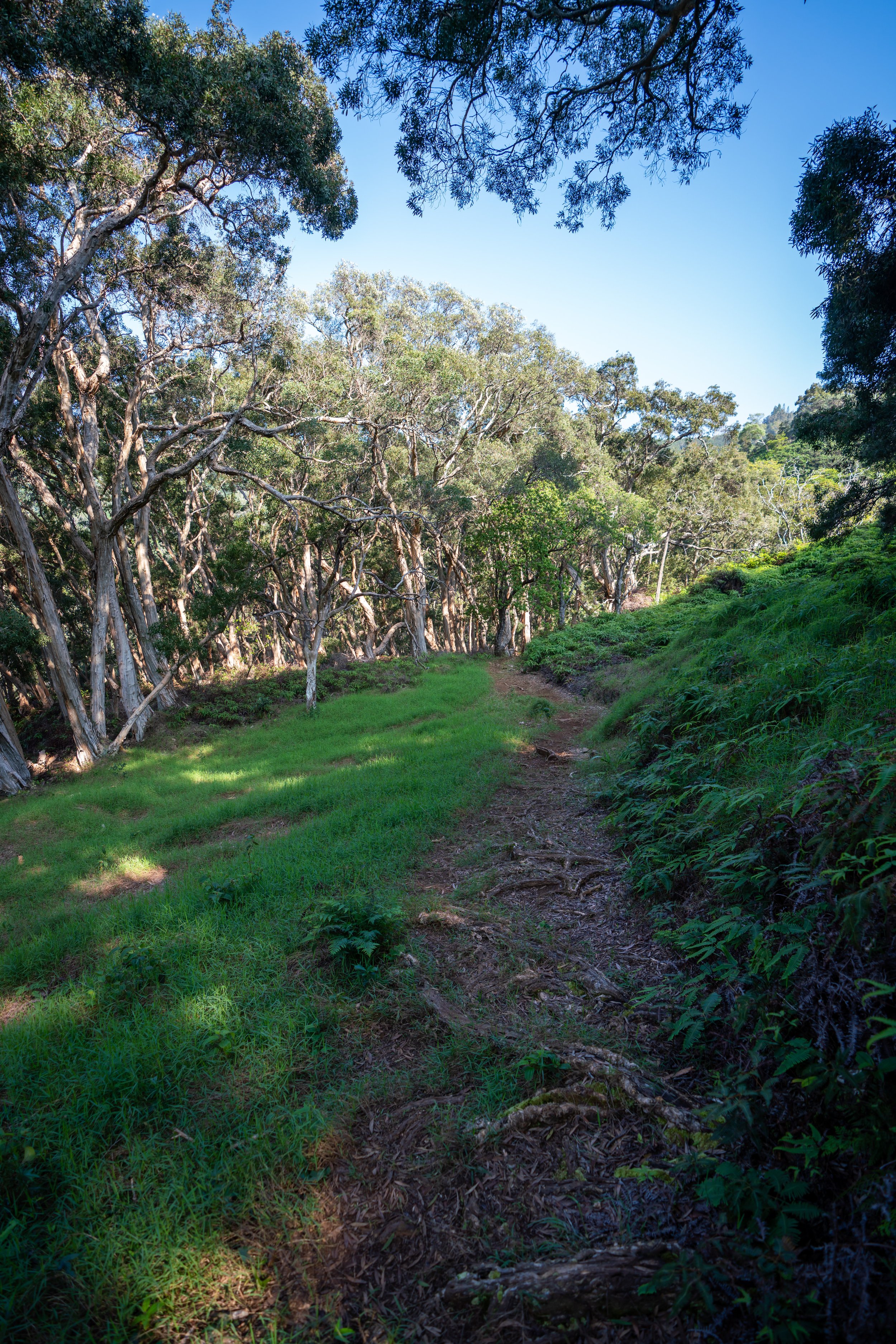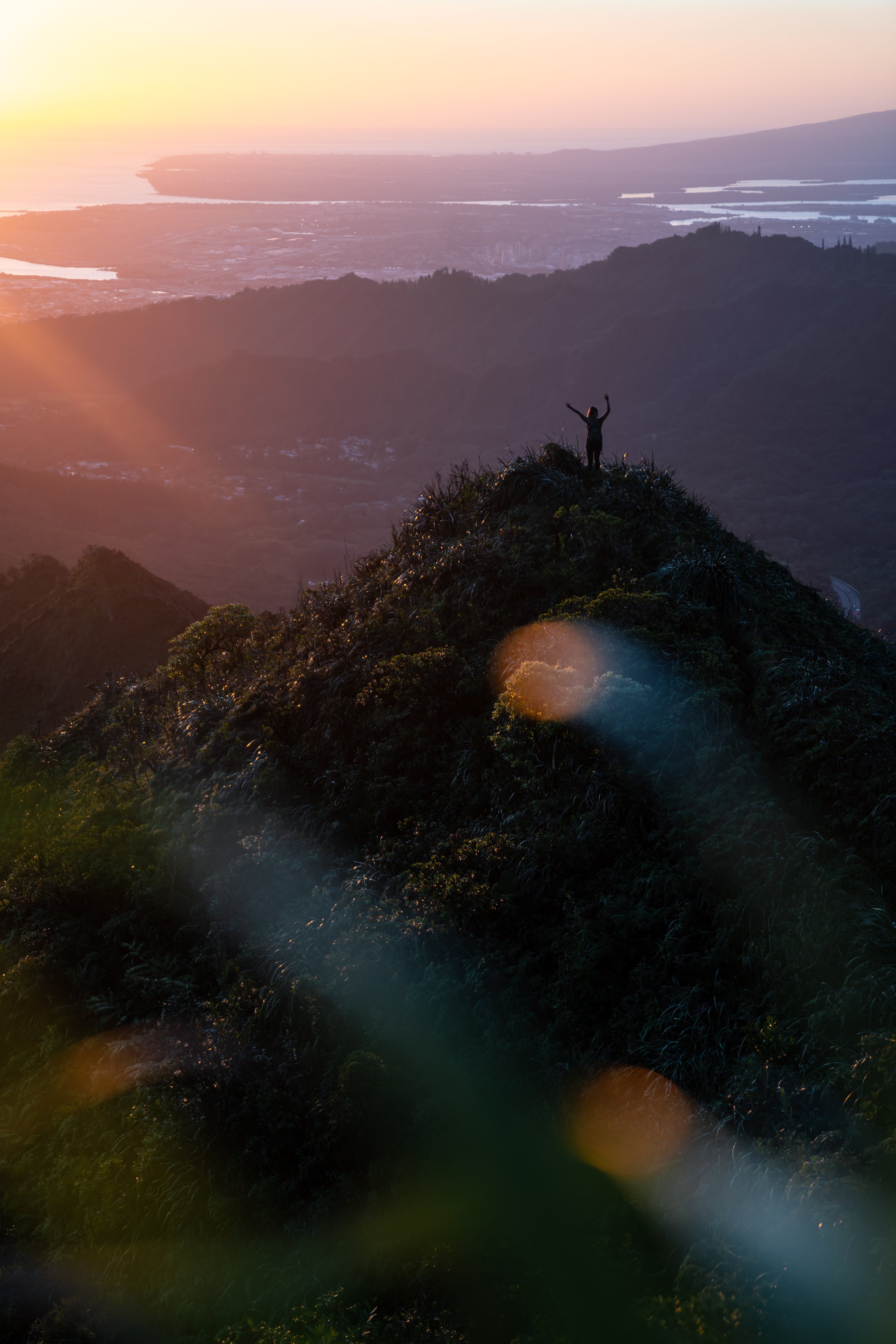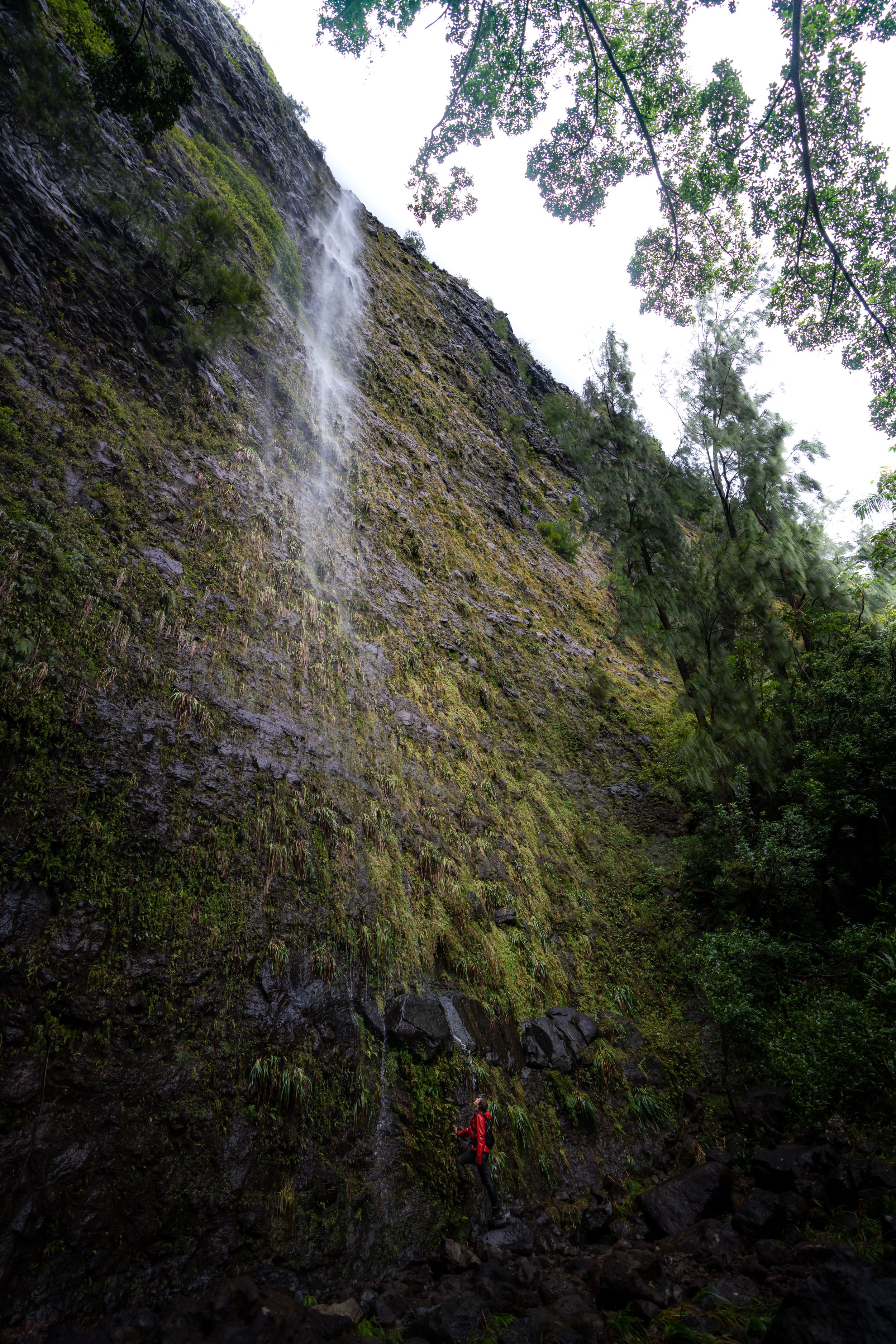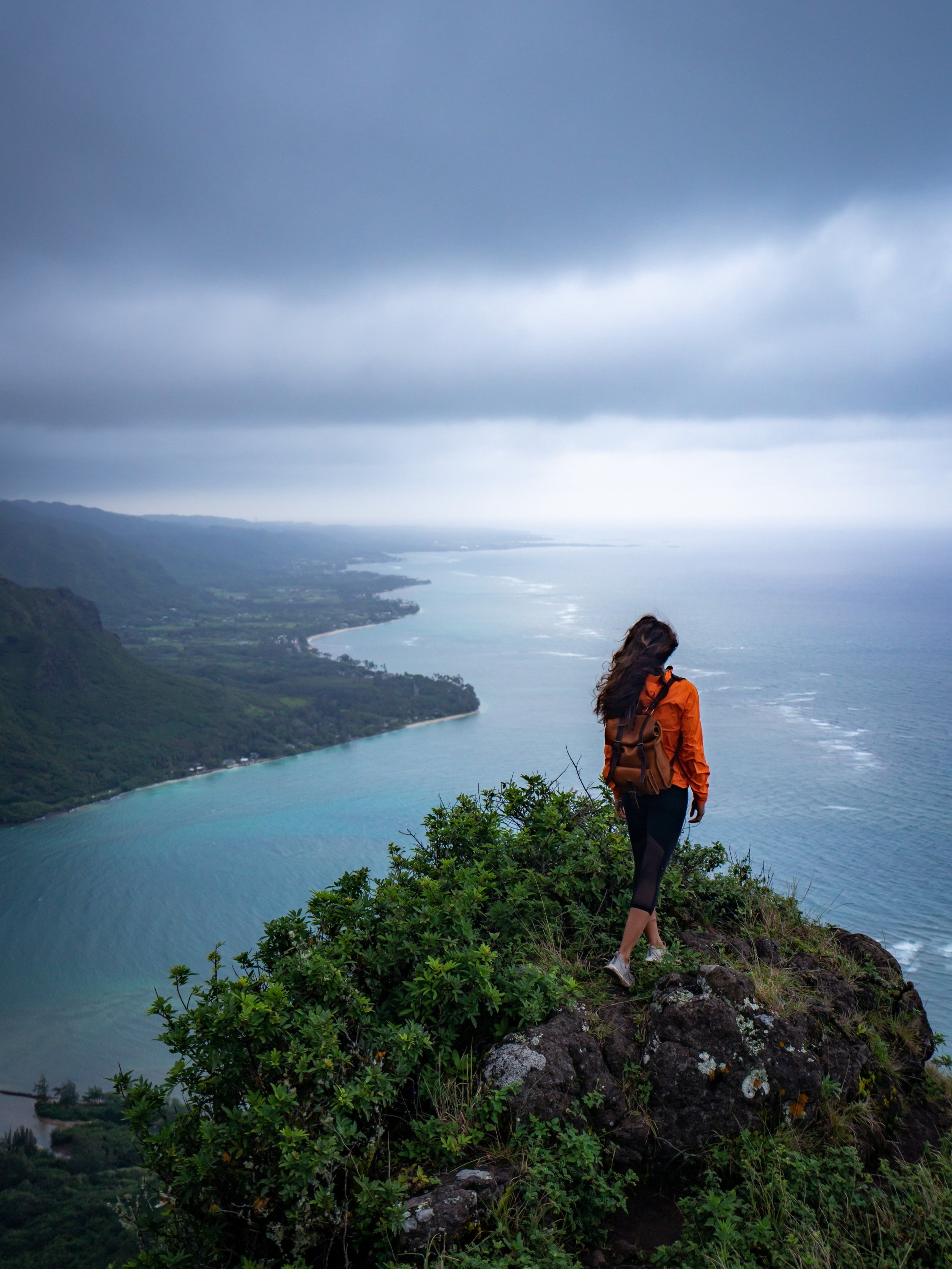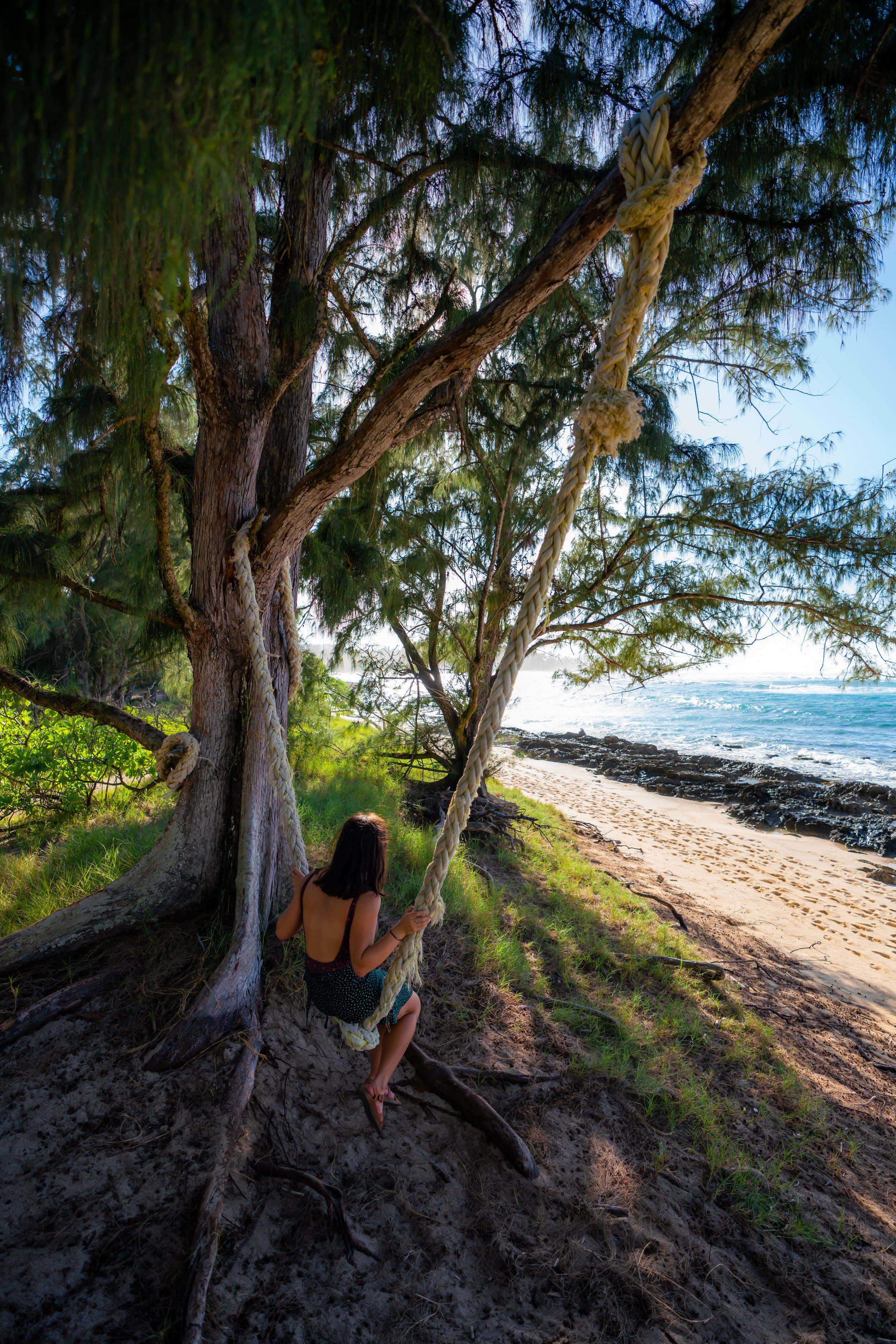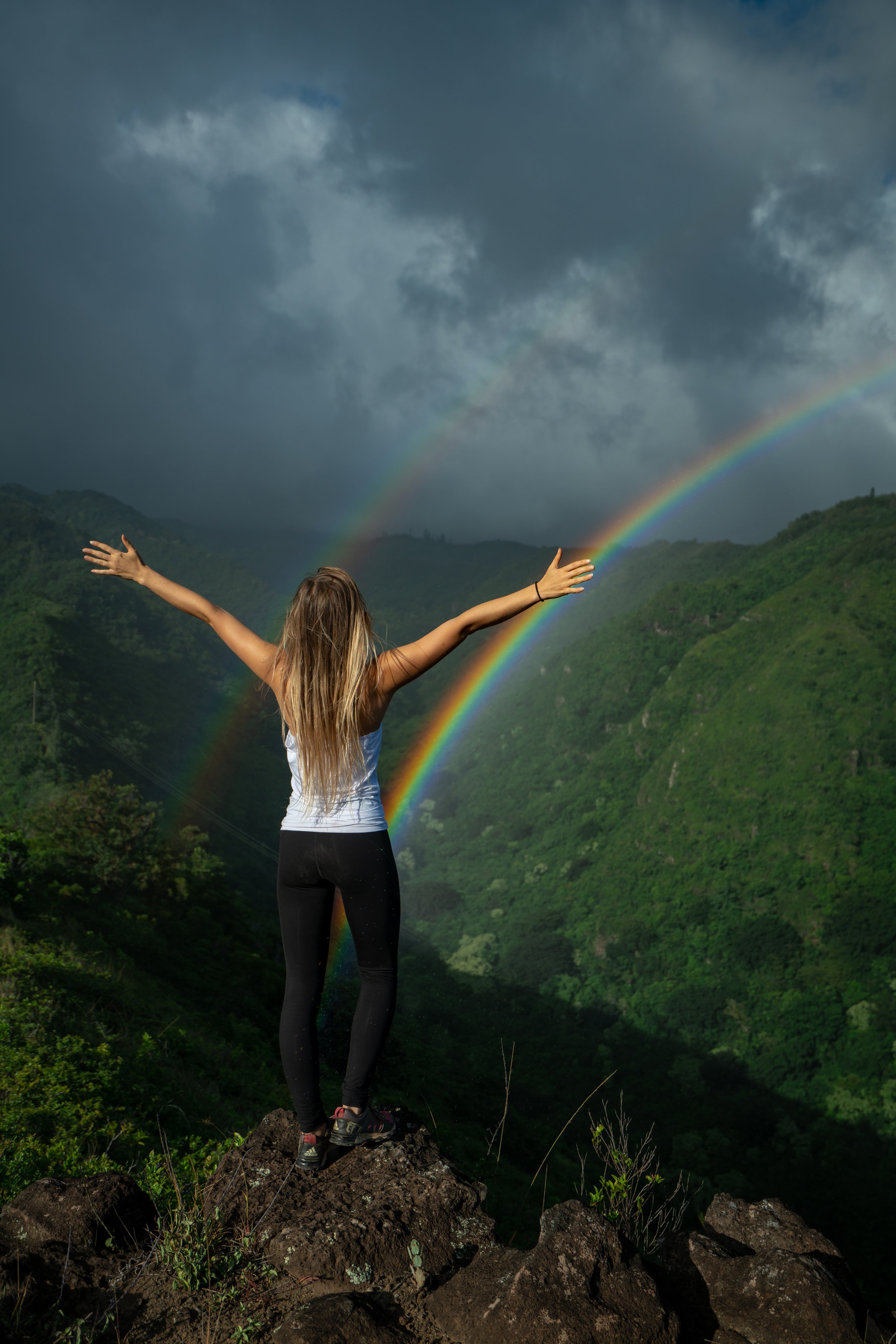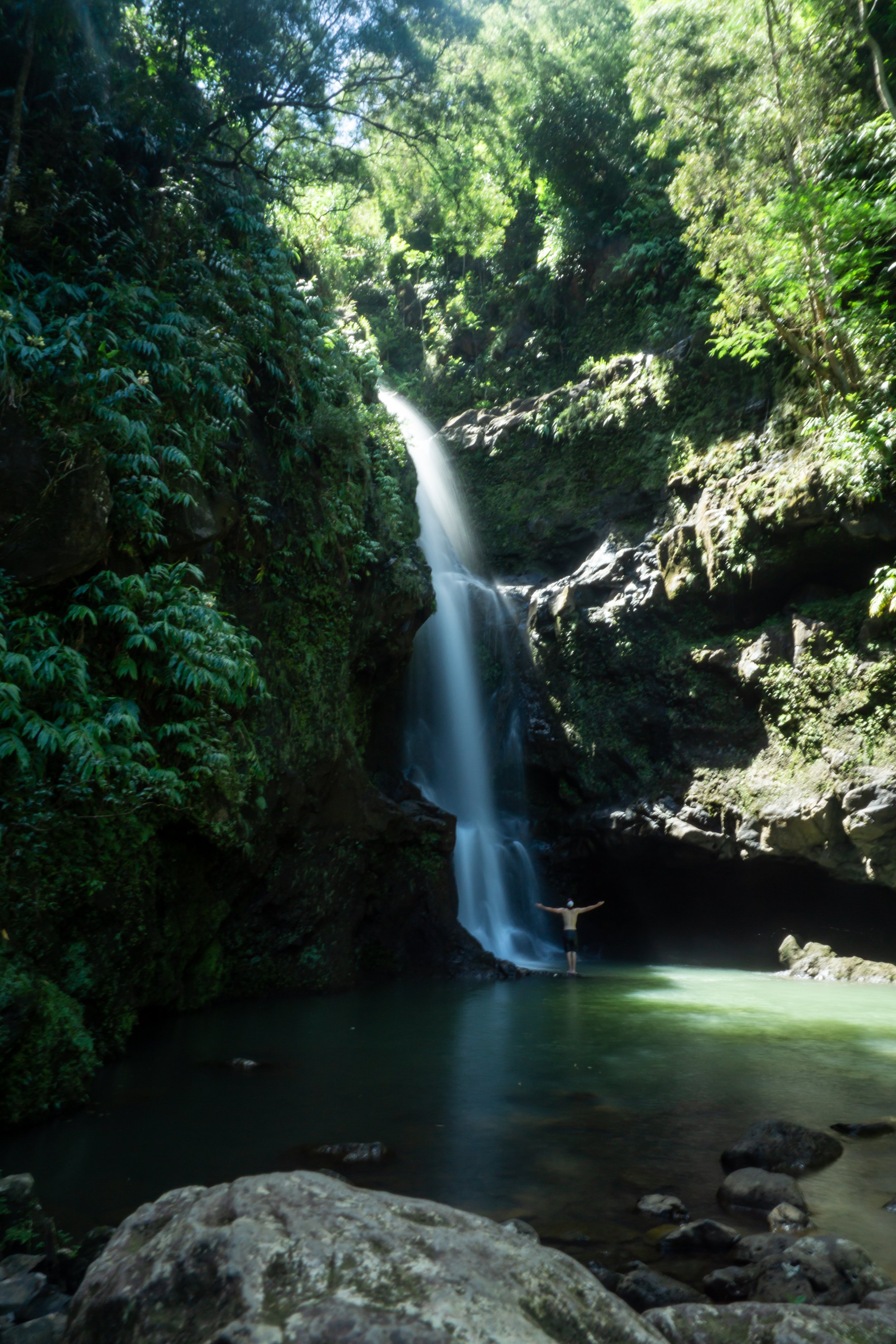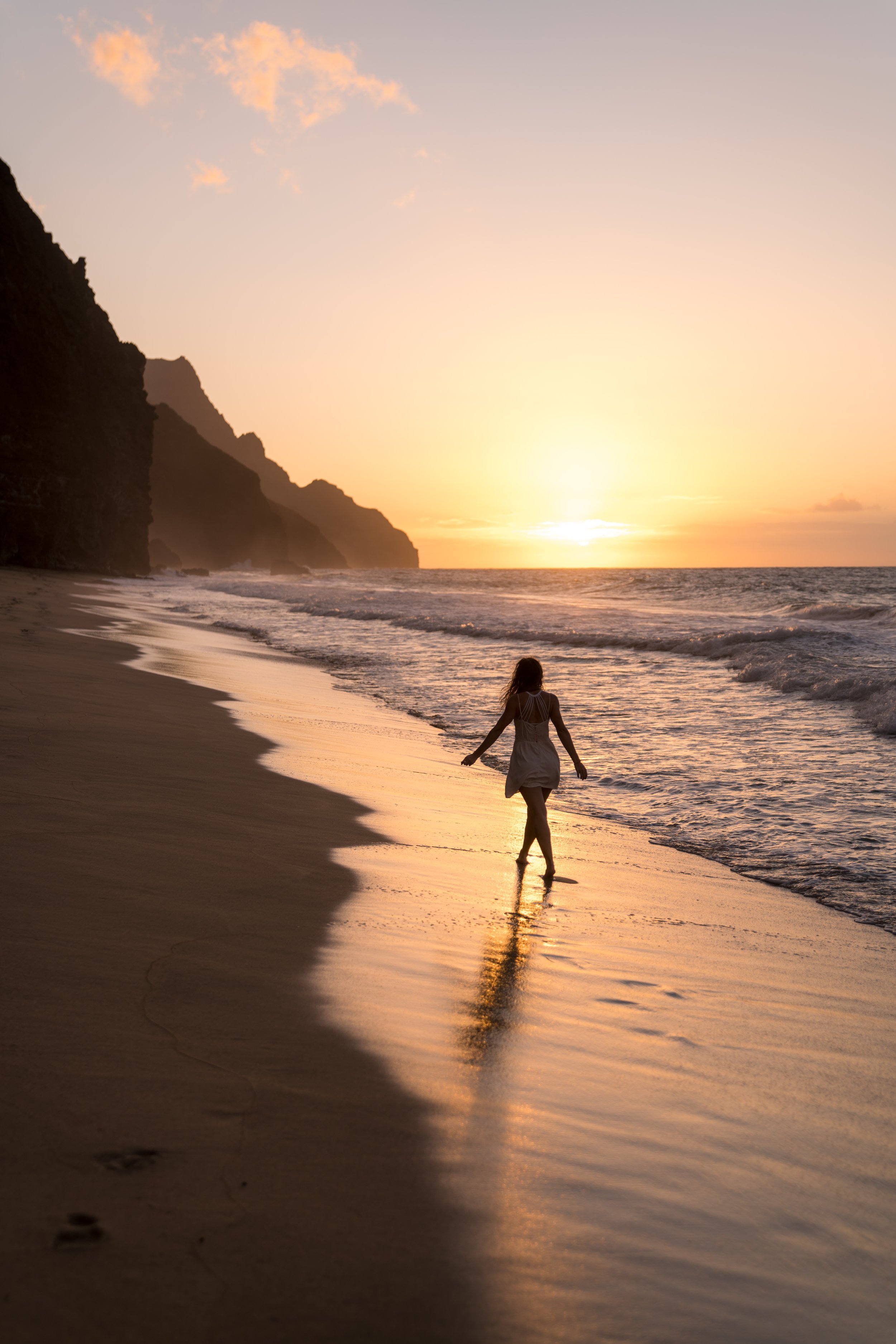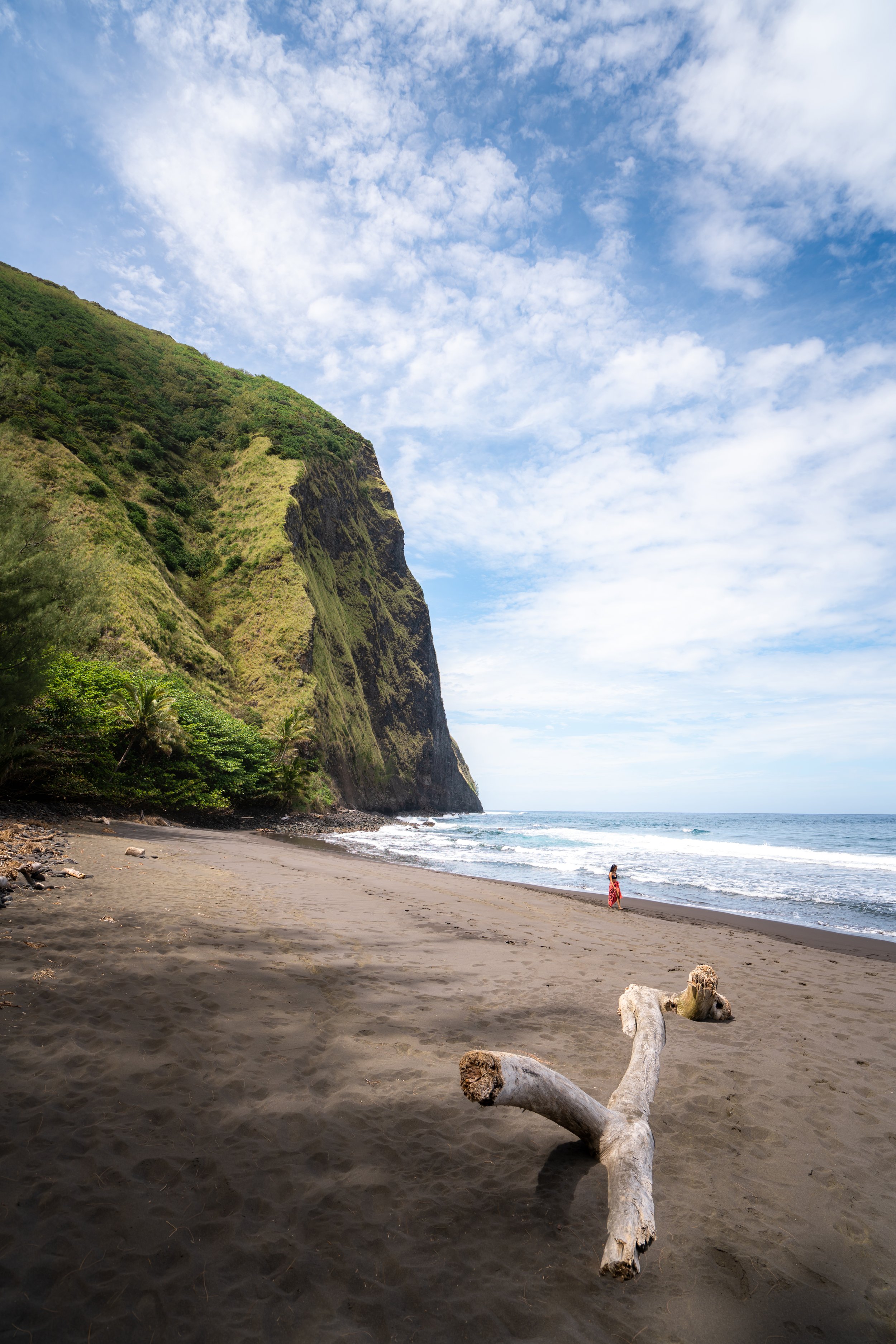Hiking the Kahuwaiʻiki Falls Trail on Oʻahu, Hawaiʻi
Distance: 2.0 miles / 3.2 km
The Kahuwaiʻiki Falls Trail in Mānoa Valley on Oʻahu is a short, but challenging, day hike to one of the island’s least-visited waterfalls!
That said, of the six waterfalls that line the back of Mānoa Valley—which include ʻAihualama, Mānoa, Kahuwaiʻiki, Luaʻalaea, Naniuapō, and Waiakeakua, from left to right or north to south—Kahuwaiʻiki is the most difficult hike, and yes, Kahuwaiʻiki Gulch should only be attempted by experienced Oʻahu hikers! I say this because the short roundtrip distance is a bad indicator of the trail’s overall difficulty.
All this to say, prepare for a remote, slow, muddy, and tedious adventure up the Kahuwaiʻiki Stream, which is not at all reflective of the easy Mānoa Falls Trail where the hike begins!
Kahuwaiʻiki Falls Trailhead Parking
Parking for the Kahuwaiʻiki Falls Trail is located in the same parking lot as Mānoa Falls.
There is a small fee to park here, but know that parking is illegal along the side of the short road prior to the paid parking area.
Google Maps Directions: Kahuwaiʻiki Falls Trailhead
My Hawaiʻi Hiking Checklist
Osprey 3L Water Bladder - The Osprey 3L water bladder is the most universal hiking and backpacking water bladder on the market, and it’s my go-to because of the slide-off seal that allows it to be quickly filled from the top. Additionally, individual parts are easily replaceable, such as the bite valve.
Blister / Heel Protectors - I swear by these cheap, amazing heel protectors to prevent blisters for nearly every kind of hiking and backpacking that I do!
Black Diamond Headlamp - Personally, I recommend the Black Diamond Storm because it is one of the brightest, lightest, and longest-lasting headlamps on the market—and trust me, the weight-to-battery-life ratio really does matter!
Hiking / Trail Running Shoes - Depending on the type of trail, I prefer to use either the Keen Targhee for longer, more rugged hiking or the HOKA Zinal Trail-Running Shoe for lighter, less intense trails. In either case, both have been amazing to me for many years across countless environments, and both can be found in men’s and women’s sizes. - (Men’s Keen / Women’s Keen) (Men’s HOKA / Women’s HOKA)
Waterproof Rain Shell - You never know when it may rain, and I’ve learned over the years that a rain shell is far better than a rain jacket. By this, I mean that it’s best to have something that the water will roll right off of, which is why I recommend the Patagonia Torrentshell 3L available in both men’s and women’s sizes.
High SPF Sunscreen - Packing high-SPF sunscreen is a must for long days outside!
Hiking the Kahuwaiʻiki Falls Trail
The trail for Kahuwaiʻiki Falls follows the Mānoa Falls Trail for the first 0.5 miles (0.8 km) before branching off into the Kahuwaiʻiki Stream.
Kahuwaiʻiki Stream-Mānoa Falls Junction
After 0.5 miles (0.8 km), the Kahuwaiʻiki Falls Trail branches off the Mānoa Falls Trail at this unmarked junction on the right-hand side.
That being said, if you reached the area in the second photo, you’ve gone too far and need to turn back.
Read My Separate Post: Mānoa Falls Trail
Kahuwaiʻiki Stream
You should know immediately if you left the Mānoa Falls Trail at the right junction because the stream crossing to the right of the trail will be the confluence of both the Waihī (Mānoa) and Kahuwaiʻiki Streams.
It’s also a good place to see if Kahuwaiʻiki Falls will be flowing because the waterfall is rain-fed, meaning that the Kahuwaiʻiki Stream isn’t necessarily flowing at all times of the year.
At the start of the Kahuwaiʻiki Stream, there is no more trail. That’s what makes Kahuwaiʻiki the hardest waterfall to see in Mānoa Valley because you have to navigate your way up the gulch through all the previous storm debris.
Additionally, at the confluence, you can follow the ridge between the Waihī and Kahuwaiʻiki Streams for a little bit to save some time, but you need to know when to head back down into the stream before hiking too high.
This side trail up the ridge is only good for about 0.1 miles (0.2 km), so it’s probably easier to use it on the way out than in.
Warning
Other than Kahuwaiʻiki having no trail, the gulch also poses the highest flash flood risk of any waterfall in Mānoa Valley.
On account of all the debris and obvious rockfalls in Kahuwaiʻiki during periods of wet weather, I would avoid the gulch when it’s raining.
Even though it’s only 0.4 miles (0.6 km) from the confluence to the falls, there is essentially nowhere to escape an impending flash flood because there’s too much storm debris that would limit your ability to hike fast. Also, escaping the gulch on either side would be nearly impossible when the walls get too steep.
You will likely find that it’s easier to hike up on one side of the stream over another, but make sure that you’re always following the water.
On the left side of Kahuwaiʻiki, there is a small fork in the stream that could be easy to follow if you’re not paying attention.
I have to imagine that it doesn’t go very far, but it’s typically dry when Kahuwaiʻiki should be flowing.
Kahuwaiʻiki Falls
The beautiful Kahuwaiʻiki Falls is the end of the trail, and in my experiences, the mosquitoes have either been non-existent or at their worst.
Either way, I recommend wearing long sleeves and hiking pants, as described in the section below.
Hawaiʻi Hiking Pants
The pants below are my recommendations that hold up the best with the overgrowth here in Hawaiʻi, but with any hiking pants that need to be durable, make sure that they are at or near 100% nylon. This is really the most important factor!
You will find these pants useful for countless trail across this blog.
Native Plants on the Kahuwaiʻiki Falls Trail
The Mānoa and Kahuwaiʻiki Falls Trail are relatively low-elevation trails for Hawaiʻi, meaning that they are predominately covered with non-native/ invasive species.
However, there are a few to look out for like the ʻĒkaha fern in the photo below, Hau trees, and Māmaki located randomly along both trails.
That being said, if you are curious about trying the native Hawaiian Māmaki tea, I kindly ask that you don’t harvest Māmaki from our native forests but, instead, buy from one of the local reputable vendors, such as those listed below.
If you would like to learn more about these and other native Hawaiian plants from across the islands, check out my separate post below.
Read My Separate Post: Native Hawaiian Plant Guide
More Oʻahu Adventures
If you’re interested in reading about some more amazing Oʻahu adventures, check out my separate posts below!
Best Hotels & Restaurants in Waikīkī
If you’re trying to decided where to stay on Oʻahu, check out my top 10 list for the best resorts and restaurants in Waikīkī.
I break down what makes one hotel a better choice over another, so that you can find the best fit for your stay on the island.
Read My Separate Post: Best Waikīkī Hotels & Restaurants
HNL Airport-Hotel Shuttle
Prices on ride-share apps like Uber/ Lyft cannot beat the price of booking your hotel shuttle prior to arrival. I say this because there are additional fees for ride-share airport pick-ups at Honolulu Airport (HNL), which is why I recommend booking your transportation in advance using the options below.
Additionally, the last option below will go as far as the Ko ʻOlina Resorts on the West Side and Turtle Bay on Oʻahu’s North Shore!
Best Way to Book Rental Cars!
I travel quite a bit, and I know firsthand that finding a good rental car deal can be a challenge, but that’s why I recommend comparing all of your options with Discover Cars.
In short, Discover Cars is a well-known, reputable business that allows you to search for the best deal across companies, and they have the best full-refund cancellation policy I’ve ever seen, valid up to 72, or sometimes even 48, hours prior to your reservation!
Book Here: Discover Cars
Visiting Other Islands
If you are visiting Oʻahu or heading to another island, check out some of my personal recommendations for Oʻahu, Maui, Kauaʻi, Molokai, Lānaʻi, and Hawaiʻi Island (Big Island) in these separate posts.
If you’re trying to decide which island is right for your visit, check out my overview about each island in the post below.
Read My Separate Post: What is the Best Hawaiian Island to Visit?
What is the Best Time of Year to Visit Hawaiʻi?
The weather in Hawaiʻi can often appear to be warm and beautiful throughout the year, but in my experience, there is a lot more to consider when planning what time of year to visit the islands, such as what island you are considering, what sides of each island do you plan to stay, what activities are you most interested in, the wildlife, and countless other nuanced variables that can all impact the type of trip you can expect to have.
For these reasons, I highly recommend reading through my separate article to not only understand my thoughts regarding the best time of year to come to Hawaiʻi but also what you need to consider based on the time of year that you plan to visit.
Read My Separate Post: What is the Best Time of Year to Visit Hawaiʻi?
10 Best Tours & Excursions on Oʻahu
There are a lot of different tour options to choose from on Oʻahu, but to make it easier to decide, I made a list of my favorite tours because some things simply are better with a local guide!
Read My Separate Post: Best Tours on Oʻahu
Safety
All hikes in Hawaiʻi should not be compared to trails outside of the islands, and hikers should exercise due caution on every adventure, given that many are extremely dangerous.
By this, I mean that Hawaiʻi is known for hot, humid weather, steep, dramatic, and unstable cliffs, and flash floods, which can occur without warning. Therefore, it is important that you check the local forecast, understand the physical condition of your entire group, and pack sufficient food and water before attempting any adventure.
Disclaimer
All information provided on this blog is for informational purposes only and is not intended to be a substitute for information or advice from qualified professionals or managing agencies.
Noah Lang Photography LLC makes no representations or warranties regarding the accuracy or completeness of the information provided here, and readers should use their own discretion, judgement, and seek professional advice where it is appropriate.
Furthermore, Noah Lang Photography LLC shall not be held responsible for any injuries, lost individuals, or legal issues arising from the use of information provided on this website, and if applicable, the above safety disclaimer should be referenced to provide a generic overview of the risks involved.
All said, the content on this blog is for the sole use of Noah Lang Photography LLC, and unauthorized use or reproduction of this content is strictly prohibited.
Disclosure
This post is not sponsored.
However, some of the links in this post are affiliate links, which means that I may earn a small commission if a purchase is made through one of those links. This commission comes at no additional cost to you, and I only recommend products that I personally use and believe will add value to my readers. Thank you for your support, which enables me to continue creating more!
To read the full privacy policy, click here.

About This Blog
Noah Lang Photography, also known as @noahawaii, is 100% reader-supported!
I do not accept guest articles or sponsored content of any kind on my blog, which is why, if you enjoy the outdoor and travel content I create, please consider buying me a coffee!
I appreciate your support, which helps me continue to keep this blog alive!










